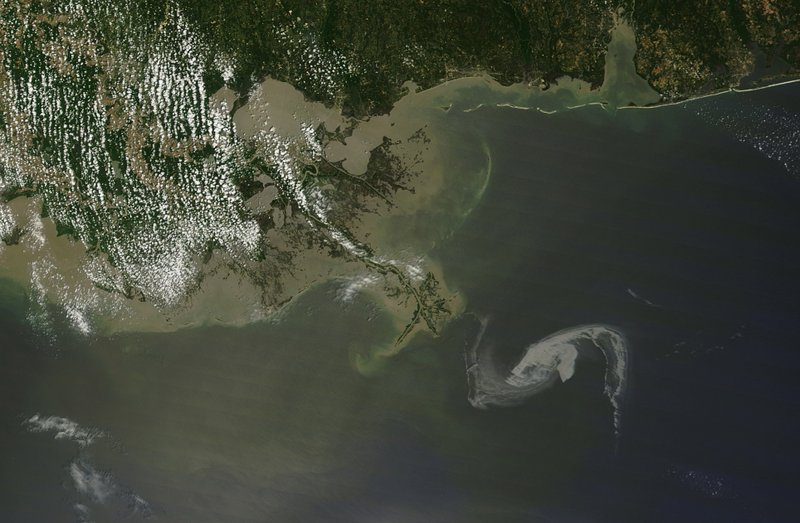Heavy winds and high tides complicated efforts to hold back oil that threatened to coat birds and other marine life as it oozed ashore from the Gulf of Mexico on Friday. The White House responded to the spill by halting any new offshore oil projects until safeguards are in place to prevent rig explosions like the one that caused it.
The National Weather Service predicted winds, high tides and waves through Sunday that could push oil deep into the inlets, ponds and lakes of southeastern Louisiana. Seas of 6 to 7 feet were pushing tides several feet above normal toward the coast, and the wind was pushing oily water over the booms meant to contain it.
The Coast Guard is working with rig operator BP to deploy floating booms, skimmers and chemical dispersants, and has set controlled fires to burn the oil off the water’s surface.
More than 200,000 gallons of oil a day are spewing from the blown-out well at the site of the Deepwater Horizon, which exploded April 20 and sank two days later. Crews are using at least six remotely operated vehicles to try to shut off an underwater valve, but so far they’ve been unsuccessful.
They are also drilling a relief well to decrease the pressure and slowing the leak, though that could take up to three months.
Meanwhile, concern grew about animals and plants on the ecologically fragile coastline. A rescue operation at Fort Jackson, about 70 miles southeast of New Orleans, had its first patient Friday, a young northern gannett found offshore. The bird is normally white with a yellow head and long, pointed beak but was covered in thick, black oil.
Down the coast, at the Institute for Marine Mammal Studies in Gulfport, Miss., scientists, veterinarians and researchers frantically prepared for the possible arrival of hundreds of oily sea mammals in the coming days.
The nonprofit facility’s director, Dr. Moby Solangi, said Friday the site will be ground zero for injured marine mammals from Texas to Florida.
Pools are freshly cleaned and prepared to handle sea turtles, manatees and dolphins. There are as many as 5,000 dolphins in the Gulf area between the Mississippi and Louisiana coasts and the oil rig.
Volunteers started arriving Friday in Venice, La., though there wasn’t much for them to do because the water was so choppy. About two dozen workers in hard hats and lifejackets were stuck on shore at a marina, lounging on small work boats, some laden with boom, ready to go to work. Some smoked cigarettes and spat sunflower seeds as they waited for assignments.
So far, boom has been laid around all the area’s wildlife refuges, including the fragile Chandeleur Islands. But with the waves much choppier and higher than normal, the water is rolling right over the booms and carrying the oil with it.
Wind was also hampering efforts by the state of Louisiana to divert thousands of gallons of fresh water from the Mississippi River to try to flush out the wetlands.
The Louisiana National Guard prepared to send communication equipment, boats, all-terrain vehicles and other equipment to help.
Read tomorrow's Arkansas Democrat-Gazette for full details.
Thank you for coming to the Web site of the Arkansas Democrat-Gazette. We're working to keep you informed with the latest breaking news.
